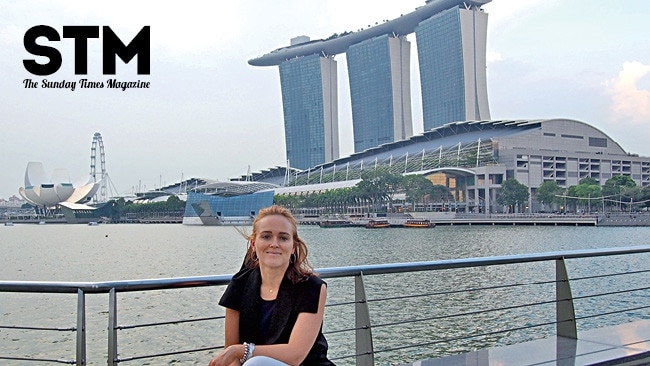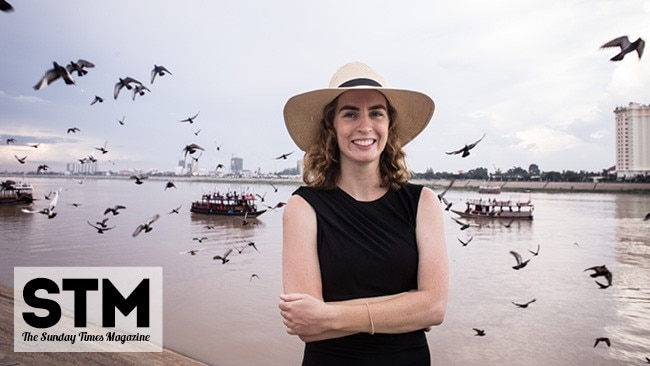Paying respect at Long Tan
A VISIT to Long Tan becomes a homage to Australia's most significant Vietnam War battle, writes Sarah Nicholson.

FORTY years ago this Friday the men of D Company, 6 Royal Australian Regiment, walked into the rubber plantation at Long Tan searching for the enemy force that had lobbed a handful of mortars on the Australian base at Nui Dat two nights before, wounding 24 soldiers.
The troops were walking into a firefight with a considerably larger force of Viet Cong guerillas and North Vietnam Army regulars.
For the next few hours, until armoured personal carriers could negotiate a flooded creek between the Nui Dat base and the besieged soldiers, the Australians fought for their lives in a tropical downpour.
Today, Long Tan looks much the same as that 1966 night when the Australian soldiers hugged the steamy ground for shelter and fought to repel the enemy in a battle considered to be the most significant Australia fought during the Vietnam War.
The rubber trees stand in rows and the branches tangle together to cast a blanket of shade over the red dirt.
In 1969 the 6RAR troops who had returned to Phuoc Tuy Province erected a simple cross among the rubber trees to mark the spot where 18 Australian soldiers died and 24 were wounded three years before.
That cross is long gone, moved to a military museum in Bien Hoa near Saigon, but a replica has been put in its place and is one of only a couple of monuments to invading forces that stand in Vietnam today.
When I went to Long Tan we had to call in at Xa Long Tan, the village beside the rubber plantation, and visit the local policeman who would decide if we were worthy of seeing the site.
We sat on tin chairs beside the metal desk in his stark office and smiled as our guide told the local officer why we wanted to see the cross.
After the brief interview he walked to the locker, retrieved something which he tucked under his jacket, and then led us to our van where he got in the front seat and directed our driver to the white cross between the trees.
When we arrived at the site we followed him and, when we all reached the cross, he took a metal plate out of his pocket and used a bit of old wire to hang the original plaque around the white concrete cross.
It read: "In memory of those members of D Coy and 3 TP 1 APC SQN who gave their lives near this spot during the Battle of Long Tan on 18th August 1966."
On that hot afternoon, with the humidity pressing heavily on us and swelling storm clouds gathering all around, Long Tan wasn't that different from the Australian bush on a summer's day.
The eucalypts were missing but the insects were buzzing and the ground was littered with leaves that had been dried by the sun and crackled under our feet as we wandered around.
There was very little natural shelter for our troops to take cover behind, a slight rise here and a bit of a depression there, and the trunks of the trees were hardly big enough to shield a burly Australian bloke.
Once we had a quiet moment and had taken a couple of pictures we joined our driver, guide and the policeman and drove back to Xa Long Tan where the official shook hands with each of us and disappeared back inside his station.
We did a U-turn and made our way out of the village and through the scrub to the former Australian base at Nui Dat, which sits beside the road from Baria to Xuan Loc, with the hill that was home to the Special Air Service (SAS) the dominant feature.
The old runway, which could accommodate the Caribou cargo planes that kept the base supplied with men and equipment, is still there and the locals who have made their homes beside the barren strip use the cleared space to dry their harvest before taking it to market.
On one side of the runway, which the troops called Luscombe Field, you can see the wedges that were cut into the bush to hide the smaller forward air controller planes when they were not flying and opposite is a collection of war-era buildings the soldiers used as workshops.
Around the dispersal area at the far end of the strip, where a farmer had dug up an old Australian tank track the week before we visited, the bush and rubber trees come to the edge of the cleared area.
These were the areas on which the soldiers pitched their tents, dug their latrines and built their mess shacks to make their home in the bush and rocks were painted in unit colours and placed to direct newcomers around the Australian Task Force base.
The rocks are still there, as is the big tree that the APC crews camped below at the other end of the base but only a depression in the dirt remains of Luscombe Bowl, where entertainers performed on their visits to "the front".
From SAS Hill you get a 360-degree view of the province beside the Saigon River the Australians were responsible for, with the vista stretching from the Long Hai hills to the Nui Thi Vai range, and down to another cleared area where helicopters landed.
The hill has become a quarry in recent times and it could disappear completely in a few years but that won't remove the link Australians have with this patch of dirt in the South Vietnamese scrub.



